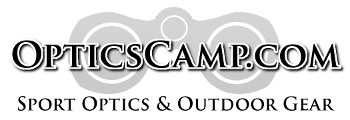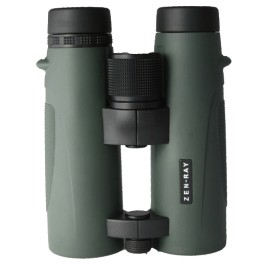No products
Product successfully added to your shopping cart
There are 0 items in your cart. There is 1 item in your cart.
Zen-Ray ZEN ED3 Binoculars
- 12 Survivors
- Aero Precision
- AIM Sports
- BKL Scope Mounts
- Celestron
- Dead Ringer
- DNZ Scope Mounts
- EGW
- F3R Machine
- Firefield
- Full Moon Optics
- Fulton Flashlights
- Galloway Precision
- German Precision Optics
- Harris
- HIVIZ Sights
- Holosun
- INTEGRIX
- Kopfjager
- Leupold
- LPA Sights
- Luna Optics
- Meade
- NcSTAR
- NEBO
- Opticron
- Pulsar
- RedRing Shotgun Sights
- See All
- Seekins Precision
- Sightmark
- SiteLite
- Styrka
- Talley
- Tech Sights
- True Utility
- UTG
- VISM
- Warne
Follow us on Facebook
Viewed products
-

Zen-Ray ZEN ED3 7x43...
High Definition Glass
Zen-Ray ZEN ED3 7x43 Binoculars ZEN-ED3-7x43
ZEN-ED3-7x43
New
High Definition Glass
This product is no longer in stock
- Remove this product from my favorite's list.
- Add this product to my list of favorites.
Data sheet
| Magnification: | 7x |
| Objective diameter: | 43 mm |
| Field of view: | 440 feet @ 1000 yards |
| Glass type | ED |
| Eye relief: | 18 mm |
| Near focus: | 6 feet |
| Interpupillary distance: | 56 mm - 74 mm |
| Body: | Magnesium alloy, rubber armor |
| Prism type: | BaK-4 |
| Waterproof: | Yes |
| Nitrogen purged: | Yes |
| Size: | 6.5 x 5 inches |
| Weight: | 27 oz |
| Included accessories: | EVA premium hard case, padded strap with quickconnect, lens covers |
More info
Zen-Ray ZEN ED3 7x43 Binocular Review
The Zen-Ray ZEN ED3 7x43 Binocular is the third generation of the ZEN ED series binoculars, retooled to the specifications received from thousands of happy Zen-Ray customers. The ZEN ED3 7x33 binoculars combine versatile 7x magnification, ample 43mm objectives, ED Glass, and an extra-wide 63 degree apparent field of view, all in an ergonomic form factor under two pounds. Perfect for hunting, birdwatching, or general observation, this is one of the best pair of ED binoculars you'll find under $1,000.
The extra low dispersion (ED) glass found in the ZEN ED3 7x43 is fully multi-coated, and the prisms utilize Zen-Ray's proprietary second generation VividBrite dielectic prism coating for ultra high reflectivity, contributing to 99.7% light transmission on each optic. In addition, exterior glass surfaces are coated in CrystalView repellant coatings, protecting ocular and objective lenses from water, oil, dirt, and abrasion.
The body of the Zen-Ray ZEN ED3 7x43 is an open bridge design constructed of magnesium alloy, which contributes to extremely light weight and extended comfort during long hours of observation or hunting. Specialized tripod sockets allow multiple points of tripod mounting, making the ZEN ED3 7x43 suitable for amateur stargazing. Waterproofing and fogproof argon-purging is standard, and the entire body is encased in a durable rubber armor for a lifetime of protection from accidental damage.
So it seems the like Zen ED3 7x43 is a pretty robust binocular. In fact, all Zen ED3 binoculars are tested to Japanese Industrial Standard Level 7 (JIS 7) testing prior to being released. Each ZEN ED3 is immersed to five feet for three minutes, and only binoculars that pass the test are released for sale.






Excellent Apparent Sharpness, Brightness and CA control
Optical Impressions:
Optically the 7x43 shares the same neutral color representation of the 8x43 primarily because of the specific formula of the antireflective coatings used in the ED3 design. As referenced in the 8x43 review this is a change from the slightly warm color bias of the ED2. The apparent field of view is narrower in the 7x43 design, 58.6 degrees versus the 65 degrees of the 8x43. In practical use I cannot tell much of a difference.
Eye relief for the 7x43 is listed at 20 mm. I have no problem seeing the full field of view with the eyecups fully collapsed. I do not wear glassed but because of my facial characteristics, large nose and relatively close-set eyes, I find that I need to use most binoculars with the eyecups in the fully collapsed position.
Close focus is right at 6 feet for my eyes.
In terms of the image, it is everything you would hope for in a high quality 7x43 binocular. The 440 foot field of view is expansive. Depth of field is also excellent. It does not give quite the “apparent” depth of field of a similarly configured porro prism model but the depth of field is still noticeably better than the 8x43 model. Very little refocusing is needed over a good percentage of typical birding distances. When you couple this with the faster focus of the ED3 design, one full turn from close focus to infinity, then you find a very easy combination to use out in the field. The larger exit pupil also comes into play here. One of the reasons I have always been so fond of the 7x40-something configuration is the large 6 mm exit pupil. The 6 mm diameter gives my eye more room to roam around the image. For the type of birding I primarily do, hawk watching mostly but also waterfowl, this characteristic makes using the binocular so much more comfortable.
Just like the other configurations of this model the image is exceptionally sharp mostly due to the use of extra low dispersion glass in the objectives but also because of the rest of the binoculars’ design takes full advantage of that ED glass.
Color saturation appears very good, again, probably in large part to the combination of ED glass and high quality antireflective coatings. Colors are well represented but do not necessarily have quite the “pop” that some of the ED3’s optical competition does (thinking Nikon and Leica in this case). Though not necessarily the case with the Nikon and Leica models I do find that many times a binocular with a specific color bias represents certain similar colors with better color saturation. Since the ED3 is fairly neutral in color representation I do not necessarily get “deep reds” or “brilliant blues” in much the same way as I would in other models. I often felt the same way about the Zeiss FLs that I owned for several years. The color representation was fairly neutral but specific colors might not necessarily have been as vibrant as competing models. I do remember an extensive explanation of this phenomenon with the FL in particular but do not have it on hand at the moment to continue the discussion further.
Apparent brightness is interesting for lack of a better word. In just about every condition I have tried these binoculars in the apparent brightness appears to be fairly equal between the 8x43 and 7x43 units. This really surprised me as I had fully expected the 7x43 to give me more of that overwhelming brightness that the 7x42 FL does even in comparison to the 8x42 FL.